Old Royal Naval College

Beez Neez now Chy Whella
Big Bear and Pepe Millard
Tue 22 Aug 2017 22:37
|
The Old Royal Naval College,
Greenwich
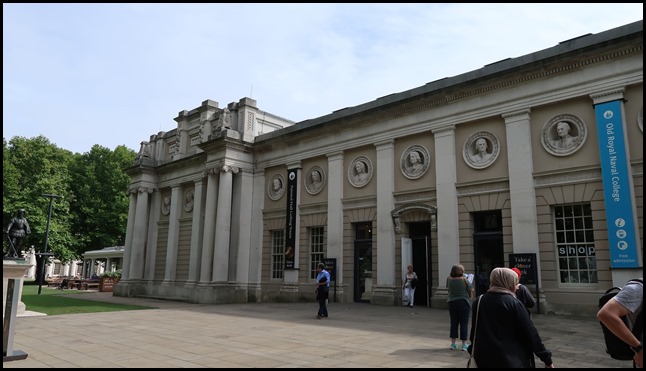 Next to the Cutty Sark is a gorgeous
building – the Old Royal Naval
College, we thought we would nip in en route to the
Observatory.
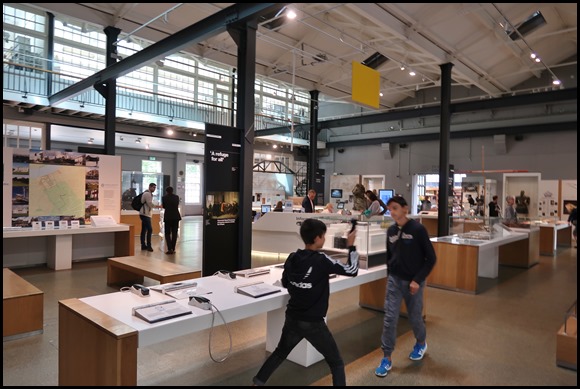 A surprisingly modern, airy space.
 The Royal Naval College opened on the
1st of February 1873. Its aim was to provide “the highest possible instruction
in all branches of theoretical and scientific study” necessary to the Navy at a
time of rapidly changing technology. The first President, Vice-Admiral Sir Astley Cooper Key, believed that officers should be
highly trained to provide the right leadership qualities. The senior training
staff and directors of studies were the foremost experts in their fields,
further reinforcing the rigorous academic standards. The college quickly became
the most highly rated naval officers’ training college in Europe. As its
reputation grew, students from navies around the world came to study in
Greenwich, with officers from Russia, Japan and China among the first
arrivals.
 Students
ranged in rank from Acting Sub-Lieutenant to Captain. There were also Royal
Marine Officers, dockyard apprentice scholars and Merchant Marine Officers.
Later, selected Army and Air Force officers joined the Naval Staff Courses as
well as officers from many other countries.
 Occasions: In 1939 the restored Painted Hall was reinstated as the Officers’ Mess. During
term time the College held regular guest nights when nearly 400 sat down to
dinner. The setting, with long rows of polished tables and the silver gleaming
under the light of the candlesticks, provided a spectacle that no other mess
could rival.
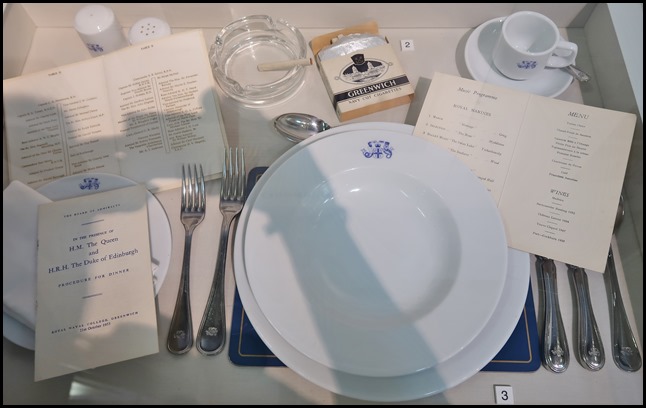 Many distinguished visitors were
entertained. For example, in 1942 Winston Churchill attended a dinner with US
government personnel and Senior Naval staff. In January 1946 the Painted Hall
was chosen for the first dinner of the newly formed United Nations. Another
memorable occasion was the 150th anniversary of the Battle of Trafalgar on the
21st of October 1955, which was attended by The Queen and the Duke of Edinburgh.
(menu and
bits above).
  Officers playing croquet on Grand
Square. The Royal Naval College courses were demanding
so it was important for students to have time off, and leisure activities were
encouraged. A variety of sport was played, including squash (using the courts
then in this building), hockey, cricket, croquet and tennis. Social activities
included a thriving dramatic society, which staged numerous plays, billiards,
Highland dancing and skittles in the Victorian skittle alley beneath the Upper
Grand Square.
The Greenwich Night Pageant held in June 1933 was staged on an
extraordinary scale. Masterminded by Admiral President Barry Domvile. It
featured over 2,000 performers who recreated scenes from Greenwich’s history
such as Queen Elizabeth I knighting Sir Francis Drake and Nelson’s funeral
procession on the River Thames. Admiral Domvile was a fascist sympathiser and,
after retiring from the Navy, was interned during World War
II.
The War Years: World War I saw a
change of emphasis in the courses offered at the Royal Naval College. It was
used partly as a barracks and partly for experimental scientific work, including
the production of vaccines. The end of the war brought further changes and
considerable expansion, including the addition of History and English
Departments and the creation of a Royal Naval Staff College in
1919.
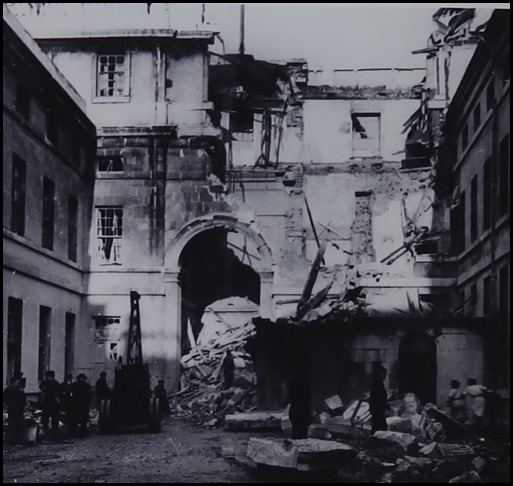 The outbreak of World War II in 1939
changed the College’s main role to providing rapid training of ‘hostilities
only’ officers with additional courses in cryptography, meteorology, navigation,
air intelligence and current affairs. Nearly 27,000 officers passed through the
College during the war years, including 14,000 from the Royal Naval and Royal
Naval Volunteer Reserves and more than 8,000 WRNS officers (Women’s Royal Naval
Service).
During the blitz the clearance of
debris from fire and bomb damage, for the most part minor, became a daily
routine. During air raids students were confined to the cellars, where there
were bunk beds. The picture above shows bomb damage to the
King Charles Court in 1943.
 The Royal Naval
College with its lights blazing for the first time in years, VE (Victory
in Europe) Day, 8th of May 1945.
 Layout.
After 1945 the College expanded its courses in engineering and science,
including for the first time nuclear technology.
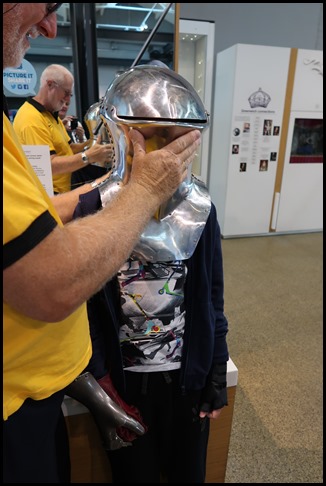  Harley made a beeline for replica
Tudor armour which Bear helped him put on. The
Gauntlet is based on a design manufactured at the Greenwich Armour
Workshop in about 1520. The overlapping plates made it easy for the wearer to
hold any weapon. It extends far enough to cover the veins in the wrist. The Frogmouth Helm is also based on a design from around
1520, this jousting helmet extends far down onto the shoulders to brace the neck
during a joust. The vision slit is small because it was very important that no
splinters from a broken lance could get into the wearer’s eyes. A guide came
along just then and explained that the smooth upward curve to the eye slit meant
that contact from an opponents lance would skid up and over the helmet rather
than cause damage the eyes (all well and good so long as the opponent at full
gallop didn’t break your neck, methinks.......).
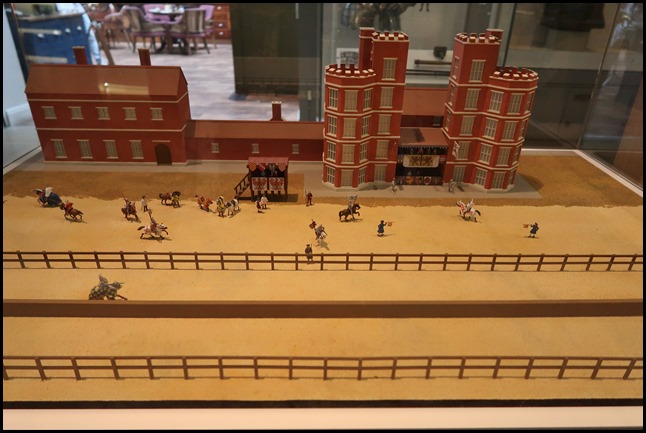 Model of a
tiltyard.
Henry VIII was an expert horseman and
loved jousting (hard to imagine as the only pictures we ever see of him is that
of a rather portly sort....). He built a permanent tiltyard at Greenwich in
1516, just south of the Palace, in the area just north of where the Queen’s
House stands today. It was very large – around 198 metres long by 76 metres
wide, with a surface that was soft, to cushion the fall of an unhorsed knight or
horse. Down the centre was the ‘tilt’, a wooden wall around two metres high
which prevented the two charging jousters from crashing into each other. West of
the tiltyard were two tall brick towers next to the spectators’ stands, the
foundations of which survive under the lawns of the Queen’s House.
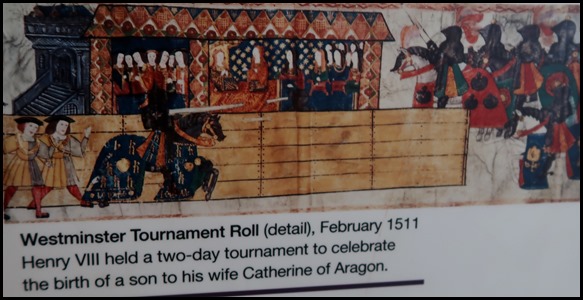 Jousts were great spectacles and
often served as entertainment for important foreign dignitaries. In addition to
the excitement of watching the joust, spectators had an opportunity to observe
the royal family and nobility. The viewing gallery was hung with rich tapestries
and there were cushions for the royal family and important visitors to sit upon.
The commoners, who often came by the thousand, had to find the best place they
could.
Jousting was a sport practised by
knights on horseback. Two armoured jousters charged at each other, the aim being
to hit one another with their wooden lances as hard and as accurately as
possible. There were two main targets: the head and the shield or body. Hits to
the head were worth more points, reflecting the fact that it was much harder to
hit. An ‘attaint’ was a good hit that did not break the lance. A lance smashed
to pieces on the head or body gave a higher score than an attaint, as it was a
dramatic demonstration of power and skill. If a jouster managed to knock his
opponent off his horse, he was awarded additional points or won the contest
outright.
Jousts were vital opportunities for
kings, princes and knights to display their lance-combat and riding skills. They
were held to honour foreign ambassadors or to mark special occasions such as
marriages and births. At the heart of these combat
festivals was chivalry – the knight’s code of behaviour that required noble
ladies to be treated with great respect and reverence. Women played an important
part in jousts. Knights tried to impress them as they often served as judges.
Noblewomen often gave their support in the form of scarves (favours) to their
chosen knights.
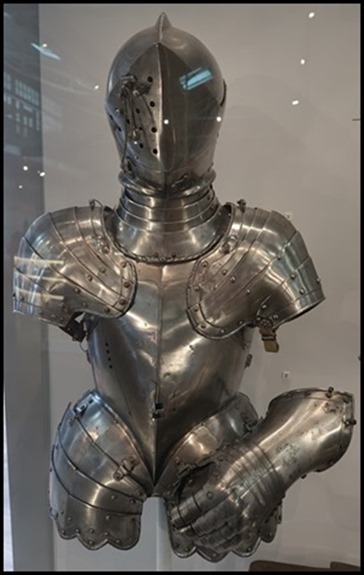 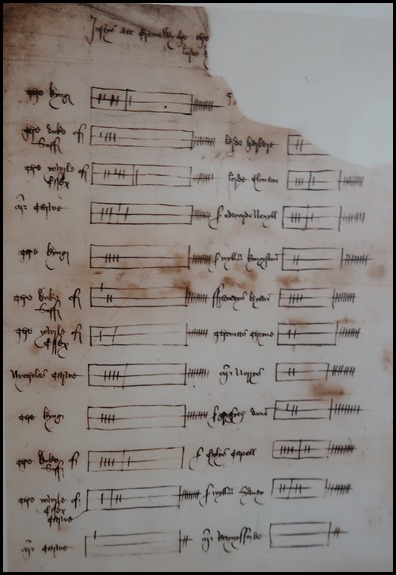 The Greenwich Royal Workshop was the
first of its kind in England. It was founded by Henry VIII in 1515 to create an
armour workshop to rival those of Germany and northern Italy. Henry engaged
Almain (German and Netherlandish) armourers and built a workshop to the west of
the Palace. A steel mill set up in nearby Lewisham provided the raw materials.
Greenwich
armour quickly became highly prized. It reflected the status, wealth and
taste of its wearer. During Henry VIII’s reign, armour made at Greenwich was
intended for the King’s personal use or was given by him as an impressive
diplomatic gift. Later, all orders for Greenwich armour had to be signed by the
Queen Elizabeth I herself. The royal armourers had gained an interntional
reputation for their superb aesthetic designs and technical craftsmanship. They
also worked closely with court artists: for example, the decoration etched on
some of Henry Viii’s finest suits of armour was designed by Hans Holbein.
By the mid-17th century, armour was
starting to be viewed as old-fashioned and obsolete and armour production at
Greenwich declined, both in quality and quantity. In 1649 Parliament closed the
Royal Workshops and transferred its contents to the Tower of
London.
A score cheque
from a joust held at Greenwich, May 1516. The marks indicate the areas of
the body struck during individual passes or ‘courses’. The position within the
box corresponds to the area of the body that has been hit: a mark on the top
line records a head-hit, while one on the middle line indicates a blow to the
body. The bottom line was used for foul or illegal strikes. The marks on the
line to the right of the box record the total number of runs by that particular
jouster.
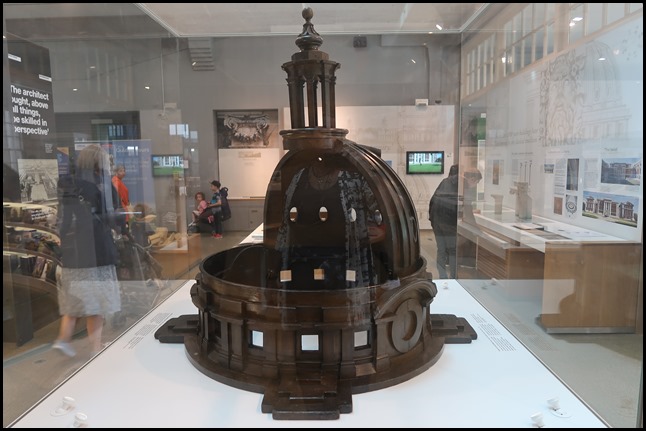 Time to leave this interesting museum with a look at a
model one of the domes.
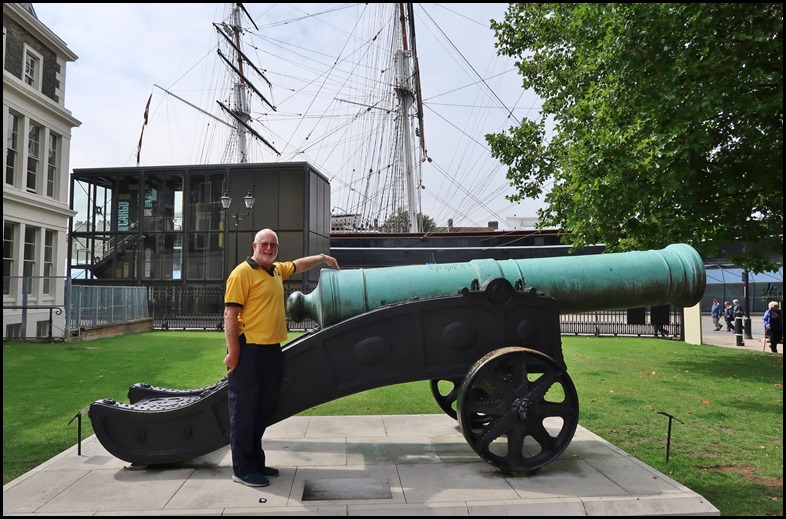 The trigger
finger looks rather grand with the Cutty Sark as a backdrop. This Turkish
bronze gun was cast in 1790-91, in the region of the Ottoman Sultan Selim III.
It weighs 5.2 tonnes, fired stone shot of just over 56 kilos and is one of two
taken by Admiral Sir John Duckworth from Kinali Island in the Sea of Marmara in
1807.
 The gun was presented to the Royal
Naval Asylum at Greenwich by HRH Prince Ernest, Duke of Cumberland, on the 21st
of October 1807. The cast-iron display carriage was
made by the Royal Carriage Department of the Royal Arsenal, Woolwich. Its
decorative plaques commemorate British naval victories.
In 1821 the Asylum became part of the
Greenwich Hospital School, renamed the Royal Hospital School in 1892. The school
moved to Holbrook, Suffolk in 1933: its Greenwich buildings are now the National
Maritime Museum. The gun also went to Holbrook until returned for display here
in 2007 with financial support from Greenwich Hospital.
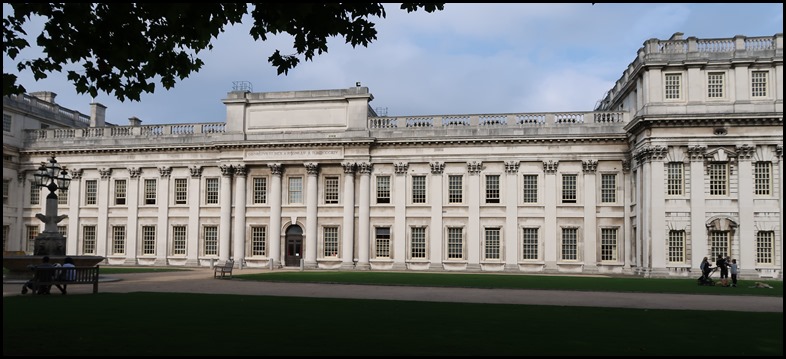  As we walked passed en route to the
Observatory we took in the beauty of some of the
buildings.
  Coming from Plymouth our favourite had
to be Devonport House.
ALL IN ALL UNCOMMON AND
INTERESTING STUFF
A BEAUTIFULLY PRESERVED BUILDING WITH MODERN
DISPLAYS |